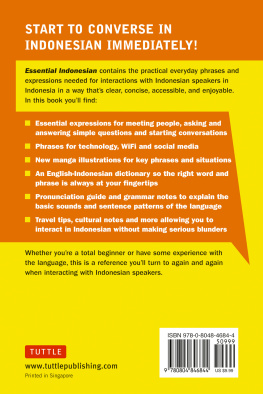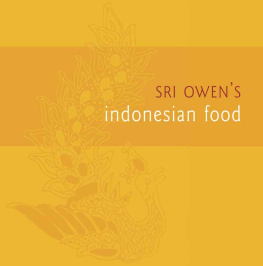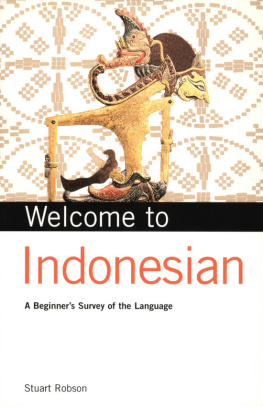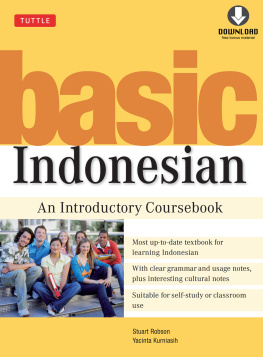

Published by Tuttle Publishing, an imprint of Periplus Editions (HK) Ltd.
www.tuttlepublishing.com
Copyright 2010 by Periplus Editions (HK) Ltd.
Illustrator: Cleiffy Leonard
All rights reserved. No part of this publication may be reproduced or utilized in any form or by any means, electronic or mechanical, including photocopying, recording, or by any information storage and retrieval system, without prior written permission from the publisher.
Library of Congress Control Number: 2010922245
ISBN 978-1-4629-0165-4
Distributed by:
North America, Latin America & Europe
Tuttle Publishing
364 Innovation Drive, North Clarendon,
VT 05759-9436 U.S.A
Tel: 1 (802) 773 8930; Fax: 1 (802) 773 6993
info@tuttlepublishing.com
www.tuttlepublishing.com
Japan
Tuttle Publishing
Yaekari Building, 3rd Floor, 5-4-12 Osaki,
Shinagawa-ku, Tokyo 141 0032
Tel: (81) 3 5437-0171; Fax: (81) 3 5437-0755
tuttle-sales@gol.com
Asia-Pacific
Berkeley Books Pte Ltd
61 Tai Seng Avenue, #02-12
Singapore 534167
Tel: (65) 6280-3320;
Fax: (65) 6280-6290
inquiries@periplus.com.sg
www.periplus.com
First edition
13 12 11 10 10 9 8 7 6 5 4 3 2 1
Cover photo Altrendo Images, Getty Images.
Printed in Singapore
TUTTLE PUBLISHING is a registered trademark of Tuttle Publishing, a division of Periplus Editions (HK) Ltd.
Contents
Foreword
Basic Indonesian is an entirely new book. It has been made to fill the need for a one-volume coursebook which can be used for either self-study or classroom use by those who are keen to make a start on mastering the Indonesian language. The users we have in mind might be students in universities or schools outside Indonesia, or expatriates living in Indonesia.
The Stories are set in Jakarta (apart from an excursion to Yogyakarta), are original and describe realistic situations, contain some interesting cultural sidelights, and display a lively mix of narrative and dialogue. Bearing in mind that our readers will be adult learners, we have also included clear Language notes, which, we hope, will explain the grammar and build a solid foundation for further steps forward in the study of Indonesian.
The authors are Stuart Robson, formerly Associate Professor of Indonesian at Monash University (Melbourne, Australia), and Yacinta Kurniasih, a native speaker with very extensive experience in teaching Indonesian, now at Monash University. These two have a vision of language as a means of bringing people closer together, by enabling them to communicate this isn't just a matter of exchanging information, but also a means of exploring our common humanity, by including some of the thoughts and feelings we share. Language should, we believe, help us to understand "what makes people tick".
The photos were taken by Benedicta Kuspartini in Jakarta. We are very grateful to her for all her efforts to get them right. Terima kasih banyak, Tini!
Most importantly, thanks to Eric Oey (CEO of Periplus/Tuttle), for patiently enduring the delays in the writing process and encouraging us to continue, and to Nancy Goh for formatting and editing the final product.
Introduction
If you decide to study a language, your study will be all the more meaningful if you know something about it, beyond memorizing vocabulary and analyzing sentence structures. You will certainly want to know where the language came from, and what it is related to. So at the beginning of our journey we offer a little information to whet your appetite.
In Indonesian, the Indonesian language is called Bahasa Indonesia, which means "the language of Indonesia". It has this name because it possesses the official status, under the Constitution, of national language of the Republic of Indonesia. In other words, this language is taught and used from one end of the country to the other, and in this way serves as the "language of unity". So it has an important political as well as practical function, providing a means of communication between all the various groups within the country.
As you will probably know, Indonesia consists of a large number of islands, located in Southeast Asia (see Map). Each of these islands is home to different ethnic groups, large and small, and each of these has its own language. These are separate languages, not dialects of Indonesian. They represent the vehicle of valuable cultural traditions, and form part of an individual's identity. So these languages are people's "home" language, and exist alongside the national language, which children learn at school. It is worth noting the interesting relationship between these two, and the way bilingualism works.

So where did Indonesian come from, and how did it achieve its present position? Indonesian is a variety of the Malay language, that is, it is Malay which has been adopted and adapted for a special purpose, namely to serve as the national language of Indonesia, a nation which only declared its independence on 17 August 1945. This shows clearly that there must have been some important historical developments prior to this time, and suggests that a knowledge of the history of the region will be useful.
Malay is a language used in various parts of Southeast Asia in different forms. It is the daily language of the inhabitants of parts of Sumatra and Kalimantan, as well as the Riau Archipelago, for example, and the Malay inhabitants of West Malaysia, and also the sultanate of Brunei and the Malays of Singapore. In view of these connections, a knowledge of Indonesian is useful for learning Malaysian, and vice versa, although they are by no means identical and display significant differences, despite the similarities and shared spelling system.
From its beginnings in the western part of the Archipelago, Malay became a trade language, and as such was used by the first Europeans, the Portuguese, who came in search of spices in the 16th century, soon followed by the Dutch. From their headquarters at Batavia, the present capital of Indonesia, Jakarta, the Dutch gradually extended their control over what now constitutes the territory of Indonesia, and for administrative purposes they used Malay for contacts with the "natives". In this way, Malay was already fulfilling a function as a language of unity in the 19th century, and was being regulated by Dutch administrators and scholars.
Next page
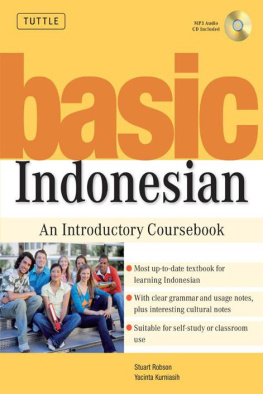
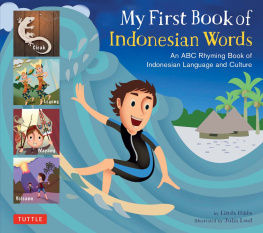
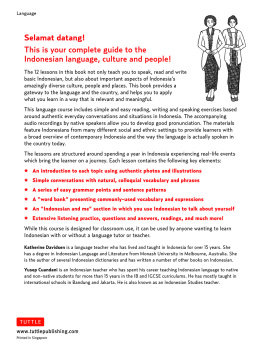
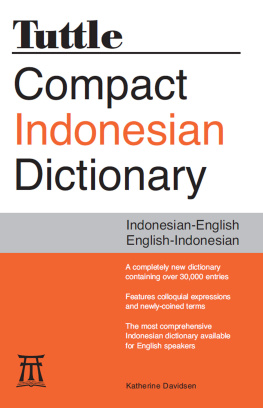
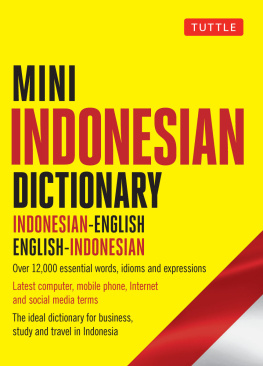
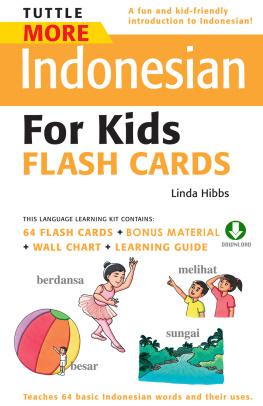

![Linda Hibbs - Tuttle Indonesian for Kids Flash Cards: [Includes Downloadable Audio]](/uploads/posts/book/362847/thumbs/linda-hibbs-tuttle-indonesian-for-kids-flash.jpg)
